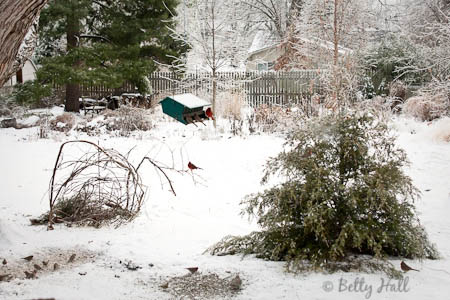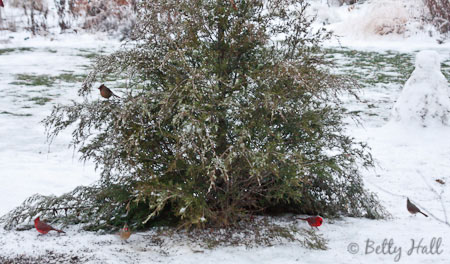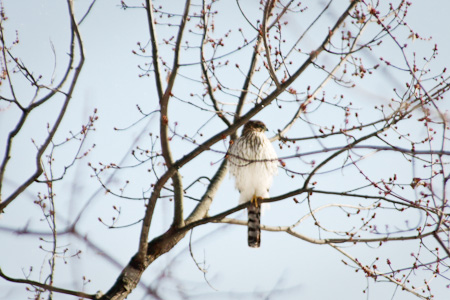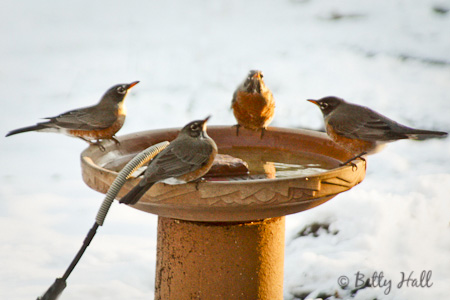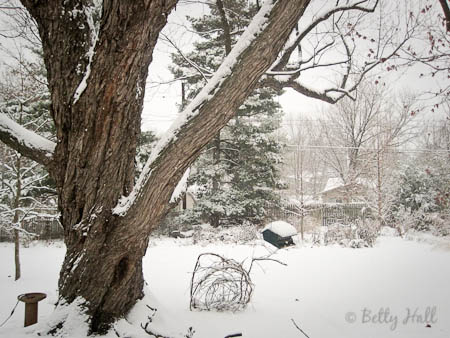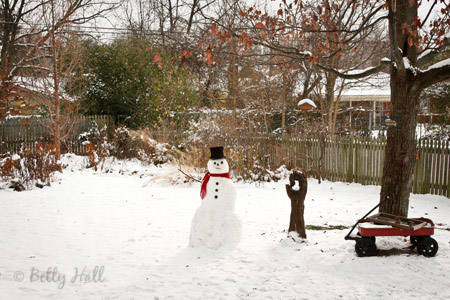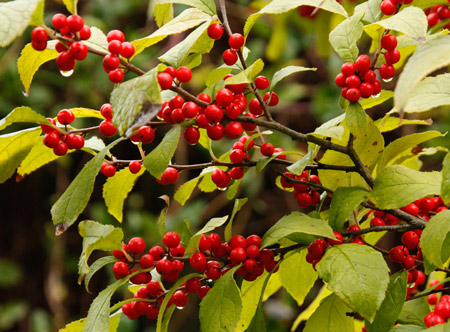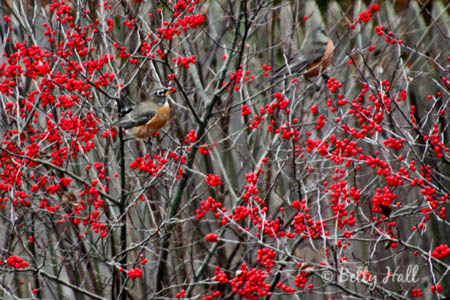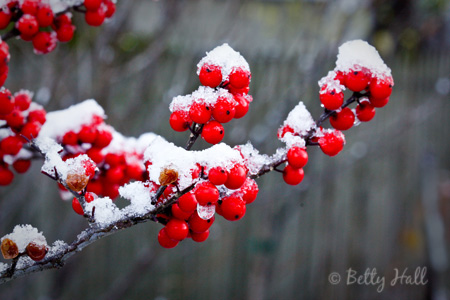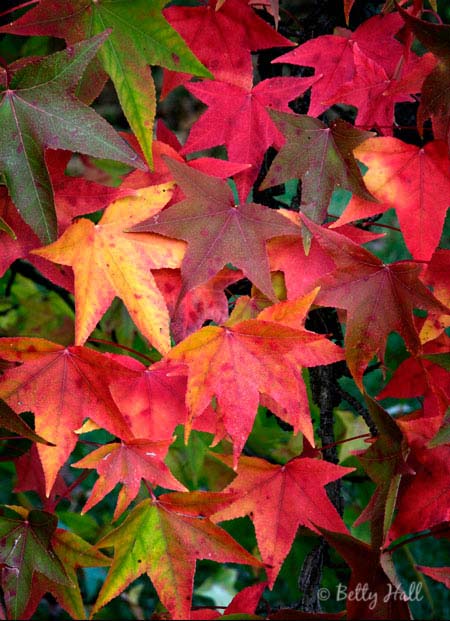It’s been another challenging week for the birds in Lexington. We went from single-digit temperatures to ¼ inch of freezing rain. Five days later much of the yard was still covered with ice.
The day before the freezing rain, our friend Carmen once again put up the birds’ freshly-cut cedar tree (Juniperus virginiana). We’ve done this for the past few winters, and we leave the tree in place until March.
This year I put extra cedar branches at the base of the tree and near the vine ball (left of bird feeder). I put some safflower seeds in both locations and the birds, including these cardinals, quickly began using the new feeding places.
The cedar provides shelter from winter weather and cover from predators such as our neighborhood Cooper’s hawk (Accipter cooperii). This one perched in the red maple for a couple of hours last week, and scared the birds away for a while.
The hawk is a beautiful bird and I accept it as an important part of nature’s web. I also understand that songbirds are an important part of its diet, but I’m not wild about it getting “our” birds.
Fortunately, the songbirds are vigilant and typically disappear before the hawk arrives. And the cedar tree and branches are one way I can give them a little extra help.
If you’d like to try this, cedar trees are native and rural landowners are often glad to give them away. Or use a discarded Christmas tree. You can stake it upright, or simply lay it on its side. Add some bird feed and you have an effective winter bird feeder.

